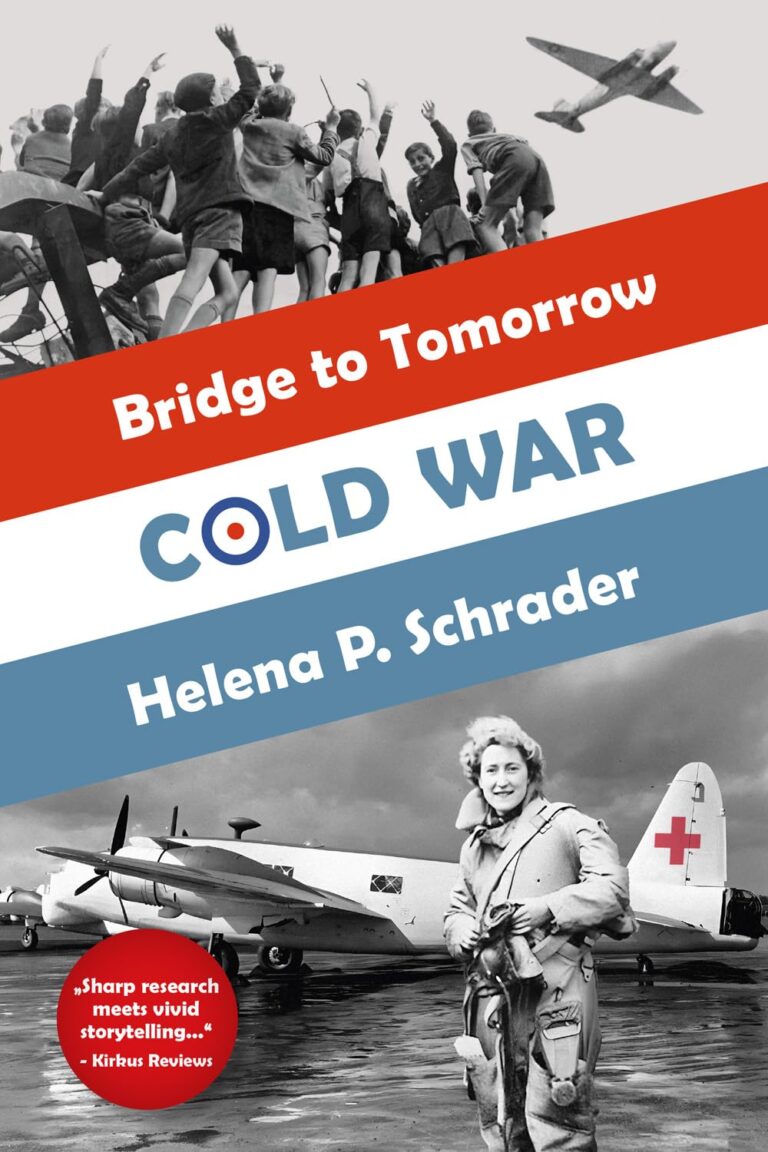
Cold War: A Novel of the Berlin Airlift received a 4+ star review, making it an IndieReader Approved title.
Following find an interview with author Helena P. Schrader.
What is the name of the book and when was it published?
Cold War: A Novel of the Berlin Airlift, published 15 May 2024
What’s the book’s first line?
That depends on how you define “first”!
The Prologue opens with: “Virginia Cox-Gordon scanned the unruly gaggle of reporters gathered for the official RAF briefing.”
Chapter One opens with: “’Creative Chaos!’ Wing Commander Robert “Robin” Priestman snapped when he caught sight of the front page of The Times.”
What’s the book about? Give us the “pitch”.
Cold War is the second book in the three-part Bridge to Tomorrow series that brings to life the Berlin Crisis of 1948-1949. As a former diplomat, I was intrigued by this successful example of non-violent resistance to aggression, particularly since Berlin was my home for many years. The first book in the series, Cold Peace, described the post-war atmosphere and introduced a cast of characters, all scarred by the Second World War. It depicted the events leading up to the first salvo in the Cold War: the Soviet siege of the Western Sectors of Berlin.
Cold War opens after the Soviets have imposed their blockade. The British and Americans have responded with an “airlift” to supply the city entirely by air. Whether working in the city administration, serving with the RAF, USAF or a private air ambulance company, each character is in their way involved in the effort to stop the spread of tyranny. Each character shines a light on these crucial historical events from a different perspective. Through the characters’ individual stories, the book exposes the political, logistical and psychological challenges the Berlin Airlift posed — and highlights the high risk of failure. It is a case study in the challenges of defying aggression without war.
What inspired you to write the book? A particular person? An event?
I was drawn to the topic because of the rise of tyranny and aggression in the world today. In 2008, The History Press in the UK commissioned me to write a non-fiction book on the Berlin Airlift for the 60th Anniversary. My research for that book, The Blockade Breakers, brought me in touch with dozens of Airlift veterans including the famous “Candy Bomber” himself, Gail Halvorsen. I heard so many great stories, that I recognized the topic was material for a thousand novels, but I was working on other projects at the time. I didn’t settle down to write about the Berlin Crisis of ’48-49 in fictional form until the Russian invasion of Ukraine.
What’s the main reason someone should really read this book?
The most important reason to read any work of fiction is to step outside of your skin, your familiar environment, and your comfort zone to gain a greater understanding of what the world looks like through the eyes of others. This book, which employs a large and diverse cast of characters, is designed to help the reader recognize the personal costs of tyranny and the dangers of complacency.
What’s the most distinctive thing about the main character? Who-real or fictional-would you say the character reminds you of?
Cold War has no dominant “main character,” so let me talk about the character I chose to put on the cover, Emily Priestman. The distinctive characteristic of Emily is that although she is a qualified and active pilot, she’s not a ‘hot-shot sky-jockey’ competing with the boys in daring and danger. She is not pushy, brash, demanding, ‘feisty,’ or assertive — she’s just unremittingly competent. A lady of her era, she does not seek the limelight nor crave power. Yet she is the indispensable personal partner to both her husband (the station commander at the RAF airfield in Berlin — soon to be the busiest airport in the world) and to her business partners in the private air ambulance company, Air Ambulance International.
Emily reminds me of Pauline Gower, the head of the Women’s Branch of the Air Transport Auxiliary. Gower not only secured women pilots a role in military aviation years ahead of her American counterpart, she also ensured that her women pilots and engineers received equal pay for equal work. Under Gower’s steady and effective leadership, the women of the ATA ended the war as respected veterans. The contrast to the experience of the WASP under Jacqueline Cochrane could not have been greater. Sometimes low-key and low-profile is more successful than loud and flashy.
